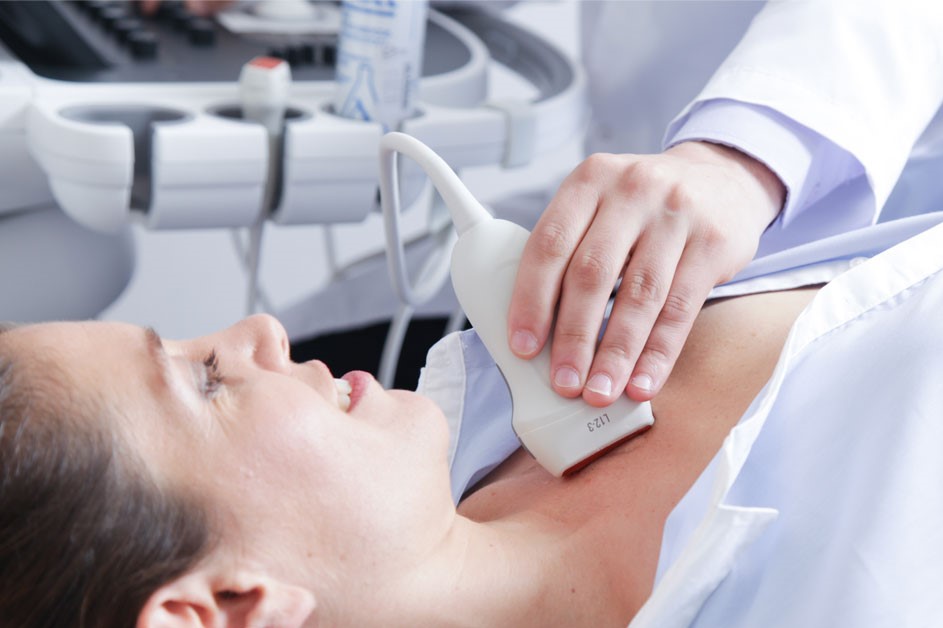
Echodoppler: what it is and when to perform it
The ecodoppler is a diagnostic test that uses ultrasound to check the health of veins and arteries and identify certain vascular pathologies, such as aneurysms and thrombosis
The investigation is recommended for people who are particularly predisposed and/or have certain risk factors.
What is Doppler ultrasound
Doppler ultrasound, simply called ecodoppler, is a non-invasive, painless, risk-free and repeatable test through which the main blood vessels can be visualised and the blood flow inside them can be studied.
By means of a probe applied externally to the skin, like an ultrasound scan, morphological (structure, wall, course) and functional (flow, speed, direction) information is obtained on the vessels that can be examined, thus making it possible to highlight any vascular and cardiac pathologies.
The ultrasound emitted by the probe reflects the moving blood passing through the various anatomical structures in real time on a monitor.
All vessels of the neck, abdomen, lower and upper limbs can be studied with this test.
For intracranial and thoracic vessels, however, the test is technically more limited.
The ecodoppler is normally performed in an outpatient setting by an ultrasound machine, where the part of the body to be examined is sprinkled with a specific gel on which the probe is then placed, and lasts between 15 and 30 minutes.
Difference between echodoppler and echocolordoppler
The Doppler effect is the principle on which many ultrasound techniques are based where moving biological tissue is explored.
In particular, the echodoppler uses two different modes of image acquisition
- continuous wave, in which the emission and reception of ultrasounds are continuous and allow precise measurement of flowmetry even at high speed;
- pulsed, where ultrasounds are received and emitted at alternating times. This technique makes it possible to measure the speed of the flows at an established depth and also to localise the anatomical structure that generates them.
Echocolordoppler, on the other hand, is an evolution of the pulsed Doppler in that it integrates information on blood flow by producing colour images.
In fact, in addition to the classic black and white image, flows approaching the probe are reproduced in red and those receding in blue, adding reliability and diagnostic value to a technique that is already in common clinical use.
When to perform the ecodoppler
The echodoppler (as well as the echocolordoppler) is a test indicated for the diagnosis of arterial and venous diseases and for the control in subjects particularly at risk for circulatory diseases.
This test can be used to highlight the presence of vascular pathologies and assess the extent of lesions, such as:
- aneurysms;
- venous insufficiency;
- thrombosis;
- atherosclerotic lesions (plaques obstructing blood flow).
In addition, persons with risk factors predisposing to cardiovascular disease such as smoking, diabetes, high blood pressure, hypercholesterolaemia, overweight, established family history, it is advisable to have an ecodoppler performed, for the first time, around the age of 50.
Based on the result obtained, the specialist doctor will decide whether and when to carry out the next check-up.
Do you need to book an ecodoppler?
Cardiovascular prevention is very important.
Educating people about a correct lifestyle, keeping the main risk factors under control and promoting early diagnosis are the basis for avoiding vascular damage.
Read Also
Emergency Live Even More…Live: Download The New Free App Of Your Newspaper For IOS And Android
Fusion Prostate Biopsy: How The Examination Is Performed
What Is Needle Aspiration (Or Needle Biopsy Or Biopsy)?
What Is Echocolordoppler Of The Supra-Aortic Trunks (Carotids)?
What Is The Loop Recorder? Discovering Home Telemetry
Cardiac Holter, The Characteristics Of The 24-Hour Electrocardiogram
Peripheral Arteriopathy: Symptoms And Diagnosis
Endocavitary Electrophysiological Study: What Does This Examination Consist Of?
Cardiac Catheterisation, What Is This Examination?
Echo Doppler: What It Is And What It Is For
Transesophageal Echocardiogram: What Does It Consist Of?
Venous Thrombosis: From Symptoms To New Drugs
Echotomography Of Carotid Axes
Echo- And CT-Guided Biopsy: What It Is And When It Is Needed


